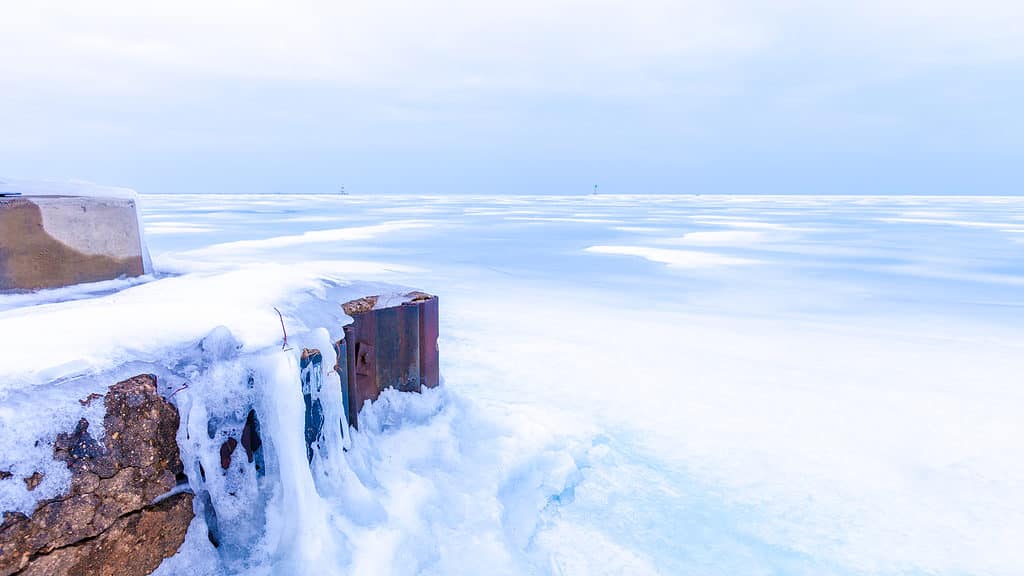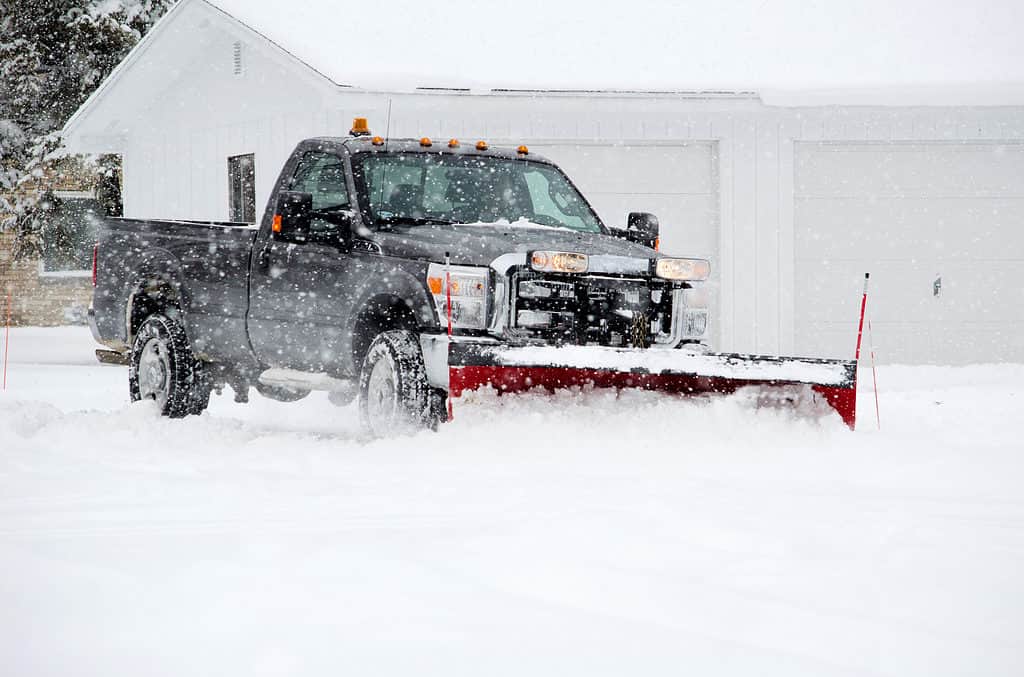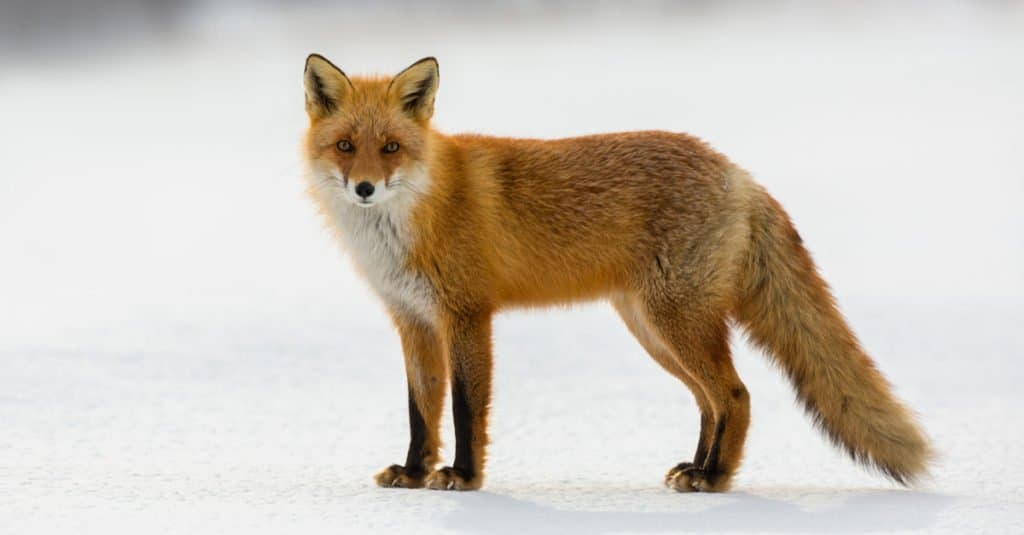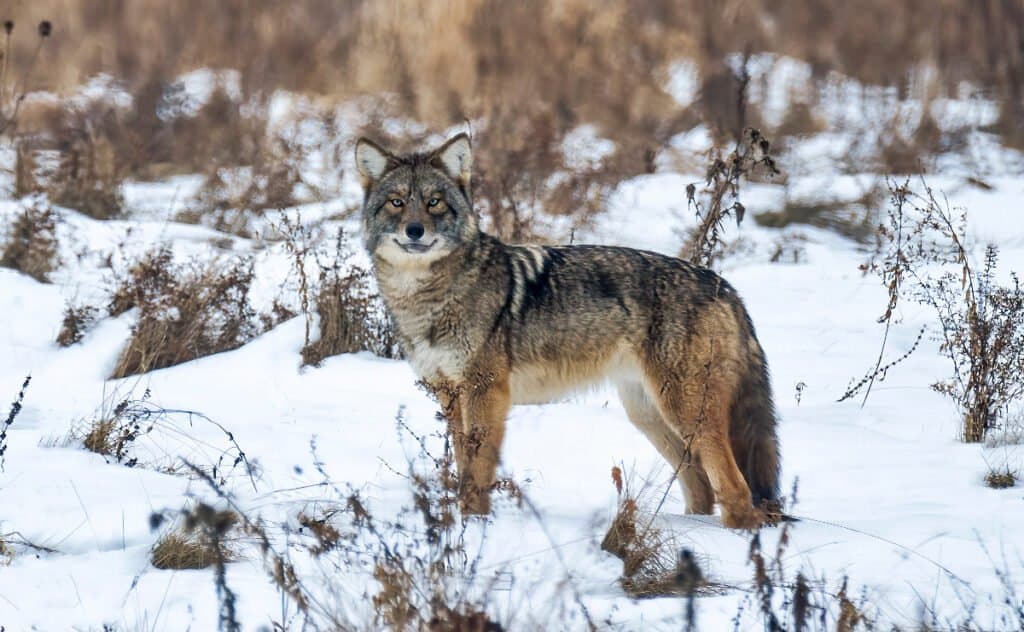Michigan is renowned for its irregular weather patterns, but the events that unfolded on March 2nd, 2002, are still spoken of with awe. The most significant March snowstorm in Michigan’s history swept through the state, depositing astounding snow upon its cities and towns. This storm left many people marooned in their homes, severely disrupting daily life across the state.
As the storm approached, many residents of Michigan stockpiled provisions and readied themselves for the worst. However, nothing could have prepared them for the deluge of snow that ensued. In this article, we will revisit the events of this historic March snowstorm and examine its impact on Michigan. From the record-breaking snowfall totals to the remarkable tales of endurance and fortitude, this storm boggled the mind and has etched itself into Michigan’s history.
What is the Typical Weather For the State of Michigan During March?

Michigan is known for having extreme weather conditions.
©Moab Republic/Shutterstock.com
As Michigan transitions from the winter chill to warmer spring days, March can be highly unpredictable in terms of climate. Unanticipated cold temperatures are still a possibility,yet typical highs vary between the mid-30s°F (1-3°C) for northern areas and low 50s°F (10-12 °C) in southern sections. With every passing day comes an increase in temperature – signaling that spring is coming! Overnight lows usually remain within the teens to low 30s Fahrenheit (-9 to 0 Celsius).
March typically brings less snowfall, with precipitation more likely to be rain or a mix of rain and snow as the temperature rises. Paying attention to the weather forecasts if you reside in a northern area is critical as unexpected snowstorms can arise anytime.
Michigan in March is infamous for its strong breezes, with gusts reaching an incredible 80 km/h (50 mph). Apart from causing power outages, these winds can cause substantial harm to buildings and make driving hazardous.
In Michigan, March can be so temperamental, with climates that swing from wintery to spring-like in a matter of hours. To ensure you’re prepared for whatever the weather throws your way, monitoring local forecasts and making contingency plans ahead of time is essential when partaking in outdoor activities or travels. That way, no matter what surprises Mother Nature has in store, you can stay safe.
What was the Biggest Snowstorm to Ever Hit Michigan During March?

Muskegon, Michigan, had 10.5 inches of snow in March 2002.
©Jacob Boomsma/Shutterstock.com
March 2nd, 2002, will be remembered as the day that Michigan’s Biggest Snowstorm made its mark in history. Grand Rapids was hit with a staggering 13.9 inches of snow, while Muskegon recorded 10.5 inches—accumulations never before observed within the state’s climatic records.
An unimaginable snowstorm swept through the region, leaving an indelible mark on those who experienced it and a breathtaking image of its power. The blizzard was so powerful that howling winds crashed up to 40 mph while visibility became virtually nonexistent. This culminated in a record amount of March snow accumulations, leading to severe flooding due to its massive precipitation levels.
The catastrophic weather event stirred havoc throughout Michigan, causing the closure of major highways and power interruptions. In some areas, the snow reached heights up to 10 feet! Even now, this devastating snowstorm is remembered as one of the most extreme storms in Michigan’s history.
How Did the Snowstorm Affect Residents Living in the State?

Michigan’s people and animals weathered the worst snowstorm in March in 2002.
©Susan B. Sheldon/Shutterstock.com
On March 2nd, 2002, Michigan experienced something it had never seen before, an unprecedented snowstorm. Records show that 20 or more inches fell in numerous areas – a remarkable feat for any storm occurring during March. This event impacted the entire state, and its consequences lingered long after.
The ravaging impacts of the storm left citizens without power for days, with roads that were either blocked or impossible to pass. Businesses had no choice but to cease operations or minimize their hours, leaving a lasting memory in Michigan’s inhabitants that they will not soon forget. Here is an insight into how this unusual weather influenced different areas of life:
Transport
As Michigan’s winter landscape was blessed with the most significant snowfall ever recorded, it caused major transportation problems. Despite numerous efforts from road crews and other public workers, the unprecedented scale of this storm overpowered attempts at clearing roads – burying them under mounds of powdery white snow in mere moments.
Thousands of cars were stuck on highways due to blocked roads or access points. At Detroit Metro Airport, hundreds of flights were canceled due to the harsh weather and heavy snowfall on runways.
In addition to these logistical problems, the 2002 storm also had some genuine human impacts. Many individuals could not commute home due to closed roads and suspended public transit services. Those without shelter found themselves in dire straits as temperatures plummeted across Michigan overnight during the height of the blizzard.
Agriculture
The 2002 March Snowstorm in Michigan brought with it devastating consequences. Heavy snowfall and extended cold temperatures caused much crop destruction, with immense losses for farmers. Even more heartbreaking were the losses of livestock, as animals unable to withstand the extreme weather perished.
The Michigan farming community received a devastating blow as they grappled with crop loss and animal death costs. Several support organizations have been established to help those impacted in their rebuilding efforts.
Economy
Unfortunately, the state experienced negative economic repercussions due to the extended frigid temperatures and excessive snowfall. This affected nearly every industry, particularly for farmers with tremendous crop and livestock loss.
The agricultural sector, in particular, felt immense pressure which cascaded into large-scale layoffs throughout that sector.
Moreover, many other industries suffered from decreased sales and profits due to a lack of customer traffic. Hazardous road conditions kept construction companies from accessing job sites for weeks, and retail stores experienced a drastic dip in their sales.
This led to an extraordinary rise in unemployment rates due to the prolonged lack of employment opportunities, which consequently caused consumers’ spending power to shrink even further.
Mental Health
The 2002 snowstorm in Michigan had a far-reaching effect on its residents’ mental health. Aside from the grief and financial strain on farmers, many individuals in the state were also left traumatized by the experience. Those who endured the storm recall hearing the wind howling and feeling terror as they watched their world become consumed by whiteout conditions.
According to psychologists, extreme weather events can induce various post-traumatic stress symptoms like anxiety, depression, and insomnia. The financial losses experienced as a result of the storm only exacerbate these distressing feelings. Multiple mental health services help to aid individuals struggling by providing counseling and other forms of support.
How Do Late-Season Snowstorms Impact Wildlife in the Area?

Foxes and other predators may have trouble with winters in Michigan as they can’t track their prey in high snow.
©Michal Dobes com/Shutterstock.com
Late-season snowstorms can have a significant impact on wildlife in Michigan. The sudden influx of snow can disrupt the natural balance of predator and prey populations, making it challenging to find shelter or food. Significant snowfalls create difficulty for predators such as wolves, foxes, and coyotes to track prey through deep snow. Additionally, thickly-fallen snow can be too heavy for some birds and mammals to traverse or dig through in search of shelter or food.
Late-season snowstorms may also disrupt the migration patterns of certain species that use Michigan’s landscapes for their seasonal journeys. Every year, monarch butterflies, hummingbirds, and Canadian geese migrate from south to north – in a feat of strength that requires perfect weather conditions. If temperatures drop too low or an unexpected late blizzard creates dangerous snow levels, these animals may not be able to survive their journey and reach their final destination.
Overall, late-season snowstorms can bring significant changes for wildlife in Michigan. While some animals can adapt quickly to changing conditions like this record-breaking March snowstorm event from 1975, others may struggle with adjusting so suddenly, especially those species reliant upon predictable weather patterns for their survival throughout the year.
How Do Animals in Michigan Cope Amid a Snowstorm?

The coywolf, or Eastern coyote, could use its thick fur as insulation against bitter cold in the biggest March snowstorm in Michigan.
©Fiona M. Donnelly/Shutterstock.com
Michigan’s harsh winter weather can pose significant challenges to animals in the state’s wilderness. Coping with a snowstorm requires adaptation, endurance, and a bit of luck. Here’s a quick look at how different species in Michigan cope amid a snowstorm:
Coyotes
During a snowstorm, coyotes will utilize their thick fur coats and natural shelters to seek refuge from the extreme weather. Additionally, they deploy their acute senses and specialized hunting tactics to find sustenance throughout this snowy terrain. As opportunistic predators, coyotes feed off various food sources, like small mammals, birds, or even carrion.
Coyotes have been blessed with remarkable physiological features that make them incredibly adept at surviving the winter season. Their coats consist of a double layer of fur which insulates them from frigid temperatures, and water-resistant pads cushion their paws so they can traverse through snow without risking frostbite.
Beavers
Michigan’s beavers, the largest rodents in its wilderness, are incredibly well-suited for living and thriving in snowy climates. They build sturdy lodges and dams to protect themselves from the frigid temperatures outside during snowstorms. These structures offer insulation with thick walls and multiple layers of warmth so these animals can stay safe amidst nature’s harsher elements.
Beavers have exceptional physical traits that help them survive the cold winter months. Their thick, waterproof fur ensures they stay dry during wet and snowy conditions, while their webbed feet allow them to swim or trek through ice and snow. Furthermore, beavers conventionally store food reserves in advance so they may have enough to consume during times of scarce food availability.
Foxes
Foxes are equipped to endure Michigan’s winter chill, yet snowstorms still present numerous adversities. With deep-set snow blanketing the terrain, locating food becomes more complex, and manifesting medical issues such as hypothermia is also possible. Furthermore, foxes become exposed prey in these conditions due to larger predators like coyotes and wolves taking advantage of increased activity during blizzards.
Snowstorms can be challenging for foxes, yet these skilled hunters can still make the most of the situation. They will seek refuge in dens and underbrush, protecting themselves from harsh winter weather. Additionally, foxes are opportunistic predators that take advantage of any opportunity for sustenance; anything from small mammals to birds or carrion may become their meal if available!
Cougars
Cougars find refuge from harsh conditions in sheltered dens or thick vegetation and masterfully hunt their prey—ranging from deer to small mammals—even amidst the snow-covered terrain. As apex predators, they are fierce yet agile hunters who can quickly scour the area for food sources.
Cougars are prepared to brave even the harshest snowstorms with various physical adaptations. Their thick coats keep them warm, while their specially-designed paw pads protect against frostbite when trekking through snowy terrain. Additionally, muscular bodies and agility allow these incredible creatures to traverse icy ground easily.
Birds
During the cold winter, some bird species fly to warmer climates while others stay in Michigan and employ various techniques for contending with snow. During a fierce blizzard, birds can find sanctuary in trees and shrubs to weather the storm.
Many species of birds have evolved with specialized feathers that help them maintain warmth during wintertime and big fat stores for insulation against the cold climate. Moreover, some birds are even equipped with unique traits to efficiently locate food sources amidst intense snowfall.
Woodpeckers use their bills to tap against tree bark, uncovering insect larvae; seeds-eating birds will actively search for bird feeders or stockpile food in preparation for wintertime.
Freshwater Fish
Michigan’s freshwater fish are vital to the state’s ecosystem, yet they face several obstacles due to the cold winter months. Even though they remain submerged beneath the water, cold-water species such as trout and salmon are highly susceptible to temperature changes due to seasonal weather conditions.
In particular, when a snowstorm strikes and causes rapid drops in water temperatures, their habitats can be severely disrupted. This leads to fatigue or even death in these creatures and disturbs breeding grounds by altering the water levels and depositing sedimentation, further hampering them from surviving. We must take action now to protect our vulnerable waters from extreme winter weather conditions.
Despite how Michigan’s animals adapt and develop survival strategies, they still endure considerable hardship during snowstorms. Difficulties finding food and water combined with exposure to extreme temperatures can be fatal. We must take responsibility as humans by preserving natural habitats, refraining from activities that may disturb or endanger wildlife during these severe weather conditions, and doing our part to reduce the adverse effects of a snowstorm on animal life.
Bottom Line
The 2002 snowstorm in Michigan was a devastating event that continues to affect the state even today. The losses experienced by farmers due to crop failure and animal death were immense, leading many into financial ruin.
Furthermore, countless individuals have had their mental health impacted by this extreme weather event—a testament to its power and lasting impact on those who lived through it. Thankfully, organizations exist to support both physical and emotional recovery from such disasters so that all affected can find ways of moving forward with hope for brighter days ahead.
The photo featured at the top of this post is © Moab Republic/Shutterstock.com
Thank you for reading! Have some feedback for us? Contact the AZ Animals editorial team.






